Arts and culture reign in the Kulturforum, located in the Tiergarten section of Berlin not far from Potsdamer Platz and home to numerous museums, concert venues, and galleries.
Origin

The idea for a “culture forum” came about after World War II, when the city’s art collections were split up between the eastern and western sectors of Berlin. East Berlin had the historic Museum Island as its cultural center.
West Berlin decided to create a new center to house its cultural institutions and art collections: the Kulturforum. Architect Hans Bernhard Scharoun devised the plans for the forum. The location chosen for the forum was the Tiergarten district, at the time a barren wasteland ripe for development.
The institutions that make up the Kulturforum
Philharmonie
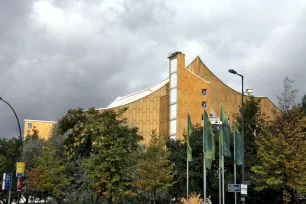
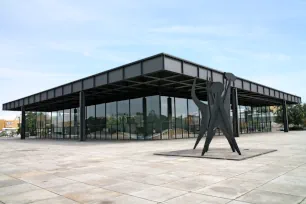
The first building to be erected was the Philharmonie (Philharmonic Hall), opened in 1963 and home to the Berlin Philharmonic Orchestra. Scharoun’s unique Expressionist building has been described on the outside as a sort of “nomad tent”, but the interior boasts some of the finest acoustics in the world. This concert hall seats more than two thousand and boasts a central stage, unusual for an orchestral venue.
New National Gallery
The most lauded building of the Kulturforum however is the Neue Nationalgalerie (New National Gallery), which opened in 1968. Dubbed “the temple of light and glass”, this glass box was designed by Mies van der Rohe in his characteristic style and houses a fine collection of twentieth-century European painting and sculpture. The nucleus of the collection consists of German expressionist art. Outside is a small sculpture garden with works from the twentieth century.
Museum of Musical Instruments
The Musikinstrumentenmuseum (Museum of Musical Instruments), opened in 1984 on the Kulturforum with a collection that was first created in 1888.
The museum holds an extensive collection of European musical instruments – big and small – from the sixteenth to the twenty-first centuries. The star attraction is a massive 1929 Wurlitzer organ that was built to accompany silent movies. Other notable instruments include a flute played by King Frederick the Great and a glass harmonica invented by Ben Franklin. The museum is situated on Ben-Gurion-Straße, across the Sony Center.
Museum of Applied Arts

The Kunstgewerbemuseum (Museum of Applied Arts) opened here one year later in a modern building designed by Rolf Gutbrod. The collection encompasses precious objects ranging from medieval crosses over Renaissance and Baroque silver and ceramics to twentieth-century appliances.
Highlights include the so-called Guelph Treasure, precious reliquaries from the Middle Ages; the Neuwieder Kabinett, a richly decorated cabinet from 1779; and a huge silver buffet, one of a few surviving pieces from the Berlin city palace.
Picture Gallery
The star of the Kulturforum is undoubtedly the Gemäldegalerie (Picture Gallery), which opened in 1998 and reunited a fabulous collection of European paintings that was separated during the Cold War. The collection spans an era from the thirteenth to the eighteenth centuries and is arranged chronologically.
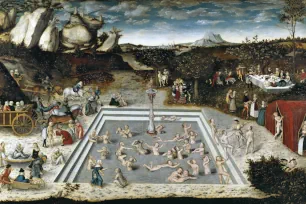
The museum owns many top works from Europe’s finest masters. Naturally all the famous German painters are represented, including Albrecht Altdorfer (known for his landscapes), Holbein the Younger (portraits), Lucas Cranach the Elder («Fountain of Youth») and Albrecht Dürer («portrait of Hieronymus Holzschuher»).
But other regions are also well represented. There are works from the Flemish masters Rogier Van der Weyden («Maria-altar»), Pieter Bruegel the Elder («Netherlandish Proverbs») and Peter Paul Rubens («Madonna and Child»). The Italian section includes works from Botticelli («Madonna with Saints»), Caravaggio («Cupid Victorious») and Antonio da Correggio («Leda with the Swan»). Other highlights include Rembrandt’s «Man in the Golden Helmet», Frans Hals’s portrait of the «Witch of Haarlem» and portraits by Thomas Gainsborough.
Graphic Arts Museum

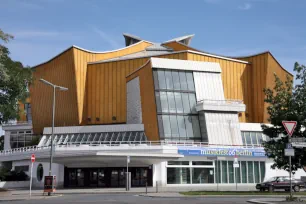
The modern building that houses the Gemäldegalerie is also home to the Kupferstichkabinett (Graphic Arts Museum), which holds a collection of European hand-illustrated books, manuscripts, drawings and engravings, particularly from the Middle Ages and Renaissance era. Some were produced by illustrious names such as Dürer, Rembrandt and Botticelli, who created the illustrations for Dante’s Divine Comedy.
Other institutions
The Kulturforum boasts many more cultural institutions. One of the oldest is the Neue Staatsbibliothek (State Library), which was built between 1967 and 1978. Another library, the Kunstbibliothek (art library) arrived during the expansion of the Kulturforum in the 1990s.
The Kammermusiksaal (Hall of Chamber Music) opened in the 1980s near the Philharmonie to provide a more intimate concert venue. Another building completed that same decade was the Wissenschaftszentrum (Science Center), which opened in 1988.
St. Matthew’s Church
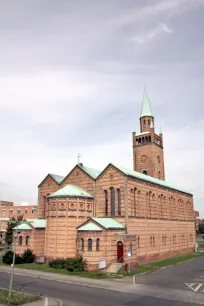
Standing somewhat forlorn in the middle of the Kulturforum is the nineteenth-century Matthäuskirche (St. Matthew’s Church). Now surrounded by modern cultural buildings, the church reminds us that the site of the Kulturforum was once a respectable residential neighborhood. The neighborhood was completely flattened during the war; the church is the only historic building that was restored.
The Italianesque brick church was originally built between 1844 and 1846 after a design by Friedrich August Stüler and Herbert Wentzel. Albert Speer intended to move the building to Spandau to make way for his ambitious urban renovation project dubbed ‘Germania’. The outbreak of the Second World War interrupted his plans, but the church was severely damaged by allied bombing. It was reconstructed between 1956 and 1960, but unfortunately the interior is only a shadow of its former self. You can climb the tower to get a panoramic view over the Kulturforum.
- Next: Bode Museum
- More Sights & Attractions in Berlin

